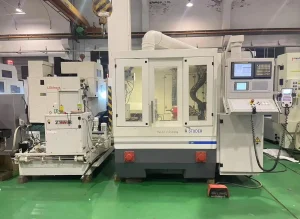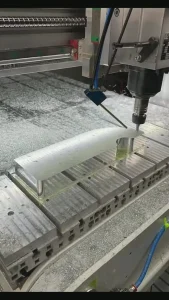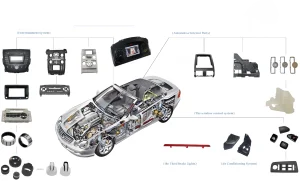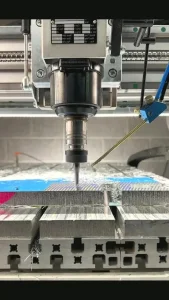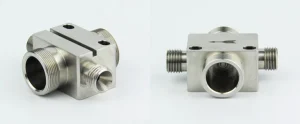Common copper materials include: ottone (an alloy composed of copper and zinc), cupronickel (an alloy composed of copper and nickel), bronze alloys composed of copper and elements other than zinc and nickel, including tin bronze and aluminum bronze, and red copper with an extremely high copper content, whose total impurity content is controlled within 1%.
1. Brass
Copper alloys with zinc as the primary additive have a beautiful yellow color and are generally referred to as brass. Copper-zinc binary alloys are called ordinary brass or simple brass. Brasses with ternary or higher alloying elements are called special brass or complex brass. Brass alloys with a zinc content of less than 35% are composed of solid solutions and have excellent cold working properties. Per esempio, brass with a zinc content of 30% is often used to make bullet casings and is commonly known as bullet casing brass or 7:3 ottone. Brass alloys with a zinc content between 35% and 45% are composed of α+β phases, with 6:4 ottone (containing 40% Zn) being the most commonly used.
To improve the properties of ordinary brass, other elements such as aluminum, nickel, manganese, tin, silicon, and lead are often added. Aluminum increases brass’ strength, hardness, and corrosion resistance, but reduces its ductility, making it suitable for use in ocean-going vessel condensers and other corrosion-resistant parts. Tin improves brass’ strength and seawater resistance, hence the name naval brass, used in ship thermal equipment and propellers. Lead improves brass’s machinability; this free-cutting brass is often used in watch parts. Brass castings are often used to make valves and pipe fittings.
The simplest brass is a copper-zinc binary alloy, known as simple brass or ordinary brass. Varying the zinc content in brass can produce brass with varying mechanical properties. A higher zinc content increases its strength but slightly reduces its ductility. Brass used in industry should contain no more than 45% zinc. Higher zinc contents will cause brittleness and deteriorate the alloy’s properties. Adding 1% tin to brass significantly improves its resistance to seawater and marine atmospheric corrosion, hence the name “naval brass.” Lead brass is commonly known as free-cutting brass. The main purpose of adding lead is to improve machinability and wear resistance; lead has little effect on the strength of brass. Engraving brass is also a type of lead brass. Most brasses have good color, machinabilità, and ductility, making them easy to electroplate or paint.
Classification of Brass
- Ordinary brass
It is an alloy of copper and zinc.
When the zinc content is less than 35%, zinc dissolves in the copper to form a single phase, called α-phase brass. This has good plasticity and is suitable for hot and cold press working. When the zinc content is 35%–45%, the α phase is accompanied by a β phase, called duplex brass. Duplex brass reduces plasticity but increases tensile strength, making it suitable only for hot press working.
The designation is “H + a number,” where H represents brass and the number indicates the mass fraction of copper. Per esempio, H68 represents brass with a copper content of 68% and a zinc content of 32%. Cast brass has a “Z” before its designation, such as ZH62.
H90 and H80 are single-phase and golden yellow, hence the common name for gold. They are used for plating, decorations, medals, and more.
H68 and H59 are duplex brasses, widely used in electrical components such as bolts, noci, washers, and springs.
Generally, single-phase brass is used for cold forming, while duplex brass is used for hot forming.
- Special brasses
Alloys formed by adding other alloying elements to ordinary brass are called special brasses. Commonly added elements include lead, tin, and aluminum, resulting in corresponding names such as lead brass, tin brass, and aluminum brass. The purpose of adding alloying elements is primarily to increase tensile strength and improve processability.
The designation is “H + the symbol of the primary added element (excluding zinc) + the mass fraction of copper + the mass fraction of the primary added element + the mass fraction of other elements.” Per esempio, HPb59-1 indicates lead brass with a mass fraction of 59% copper, 1% lead as the primary additive, and the balance being zinc.
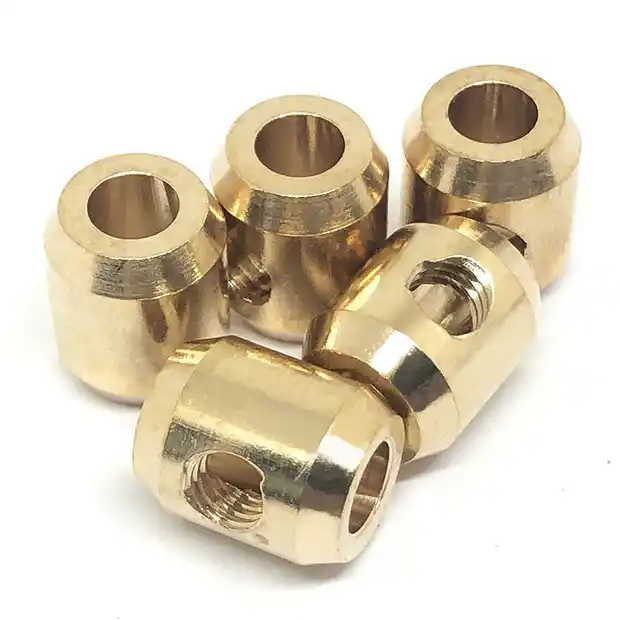
2. Cupronickel (White Copper)
A copper alloy with nickel as the primary additive. A binary copper-nickel alloy is called ordinary cupronickel; cupronickel alloys with added elements such as manganese, iron, zinc, and aluminum are called complex cupronickel.
Industrial cupronickel is divided into two categories:
- Structural cupronickel: excellent mechanical properties, corrosion resistance, and a silvery color. Widely used in precision machinery, chemical machinery, and shipbuilding.
- Electrical cupronickel: generally has good thermoelectric properties. Manganin, constantan, and other resistance alloys are used in precision electrical instruments, resistors, strain gauges, and thermocouples.
3. Bronze
Originally referring to a copper-tin alloy, bronze was later adopted as the name of all copper alloys other than brass and cupronickel, often preceded by the name of the primary additive element.
- Tin bronze: Excellent casting properties, friction reduction, and mechanical properties. Used in bearings, worm gears, and gears.
- Lead bronze: A widely used bearing material in modern engines and grinding machines.
- Aluminum bronze: High strength, excellent wear and corrosion resistance; used for gears, bushings, marine propellers.
- Beryllium bronze & phosphor bronze: High elasticity and conductivity; used in precision springs, connectors, and spark-free tools.
Designation: “Q + the symbol and mass fraction of the primary element + the mass fractions of other elements.” Cast products are prefixed with a “Z.”
- Example: QAl7 = aluminum bronze with ~7% aluminum.
- Example: ZQSn10-1 = cast tin bronze with ~10% tin.
Tin Bronze
- Tin content: 3–14% typical.
- <5%: suitable for cold working.
- 5–7%: suitable for hot working.
- 10%: suitable for casting.
It has excellent friction resistance, non-magnetic properties, and toughness at low temperatures.
By production method:
- Wrought tin bronze: usually <8% tin; made into plates, strips, rods, and tubes. Work hardening increases strength, annealing restores plasticity.
- Cast tin bronze: suitable for complex castings such as bearings and gears.
Special Bronzes
Bronzes with other alloying elements replacing tin. Examples:
- Aluminum bronze (QAl7, QAl5)
- Lead bronze (ZQPb30)
4. Red Copper (Pure Copper)
Also known as pure copper, red copper has a density of 8.96 and a melting point of 1083°C.
- Properties: Excellent electrical and thermal conductivity, high ductility, easy to process.
- Applications: Electrical wires, cables, brushes, EDM electrodes, roofing, and plumbing.
Chinese red copper grades include:
- Ordinary copper: T1, T2, T3, T4
- Oxygen-free copper: TU1, TU2, high-purity oxygen-free copper
- Deoxidized copper: TUP, TUMn
- Special copper: arsenical copper, tellurium copper, silver copper
Conductivity: second only to silver.
Corrosion resistance: excellent in air, seawater, alkalis, and many organic acids.
Processing issues:
- Impurities (Ti, P, Fe, Si) significantly reduce conductivity.
- O, S, Se, Te form brittle compounds → reduce plasticity.
- Hydrogen embrittlement (“hydrogen disease”): reaction of hydrogen with Cu2O at grain boundaries during heating.
- Bismuth/lead → hot or cold brittleness.
- Small amounts of Pb, Te, S → improve machinability.

